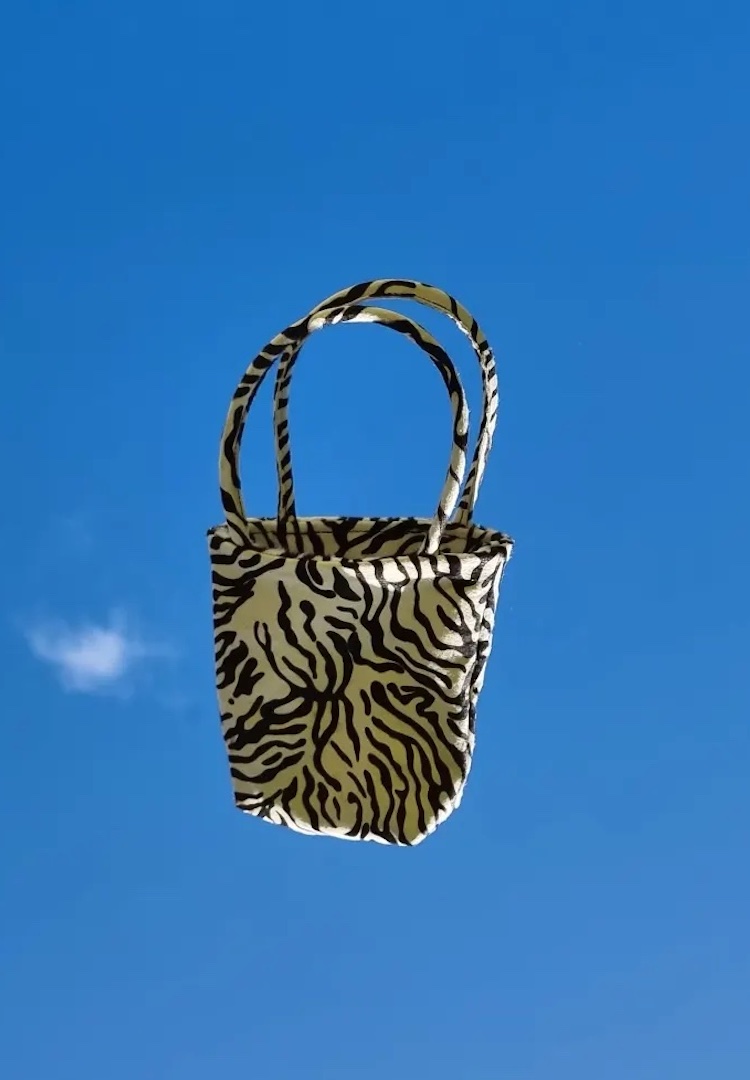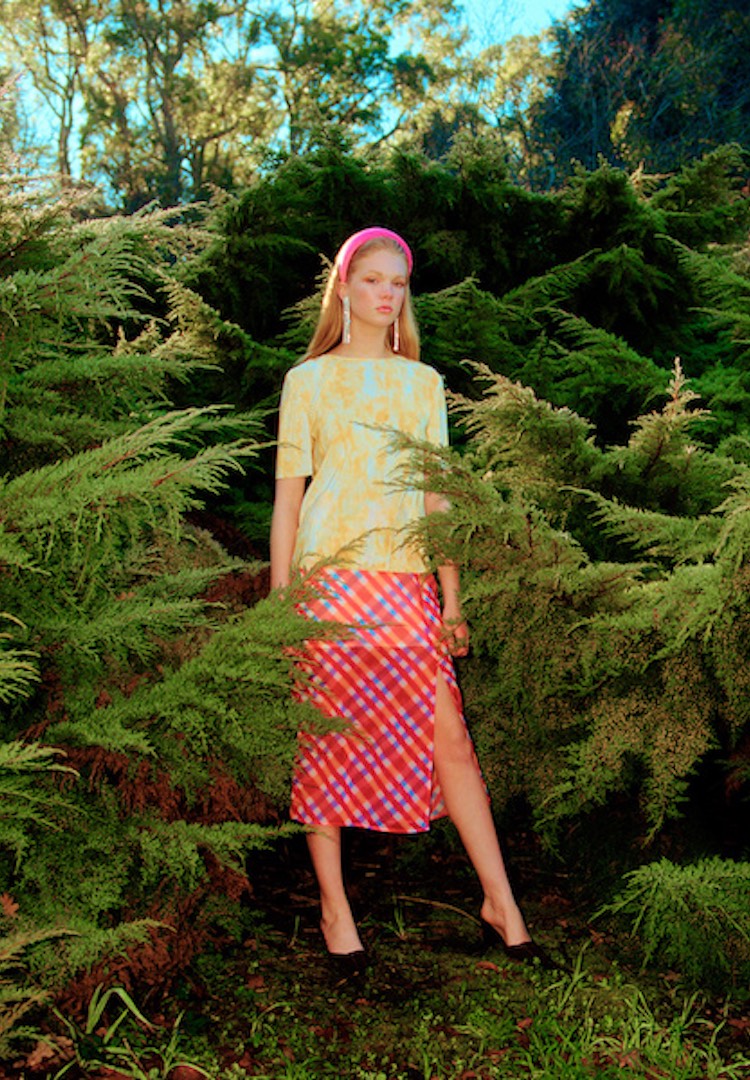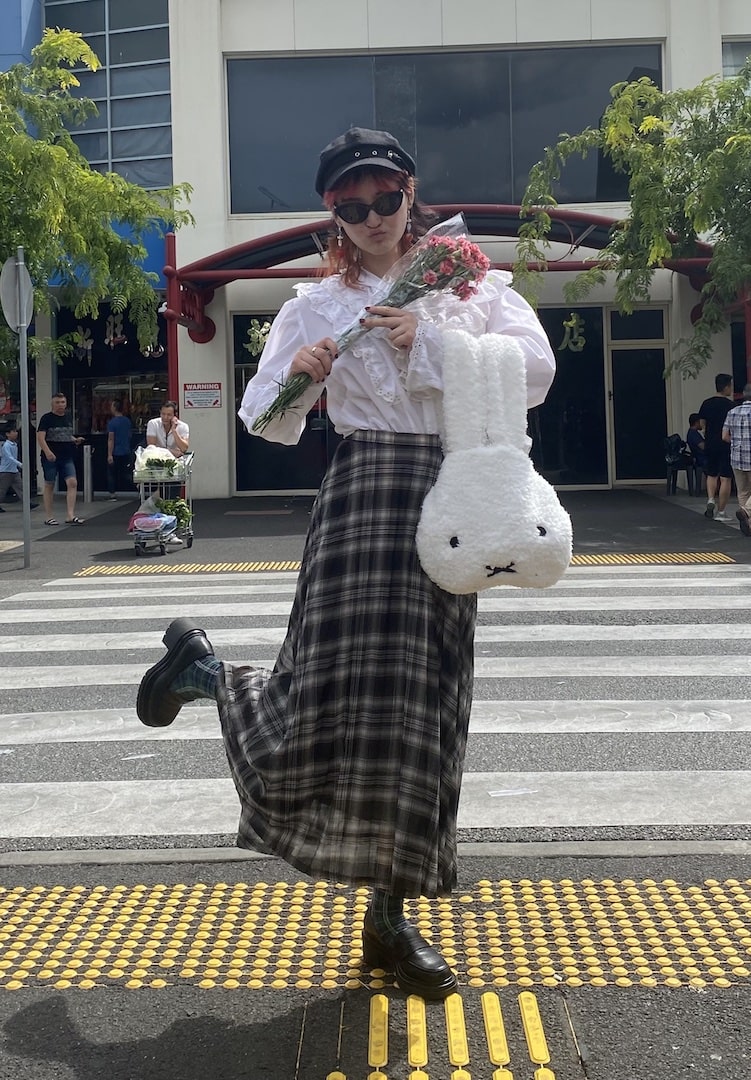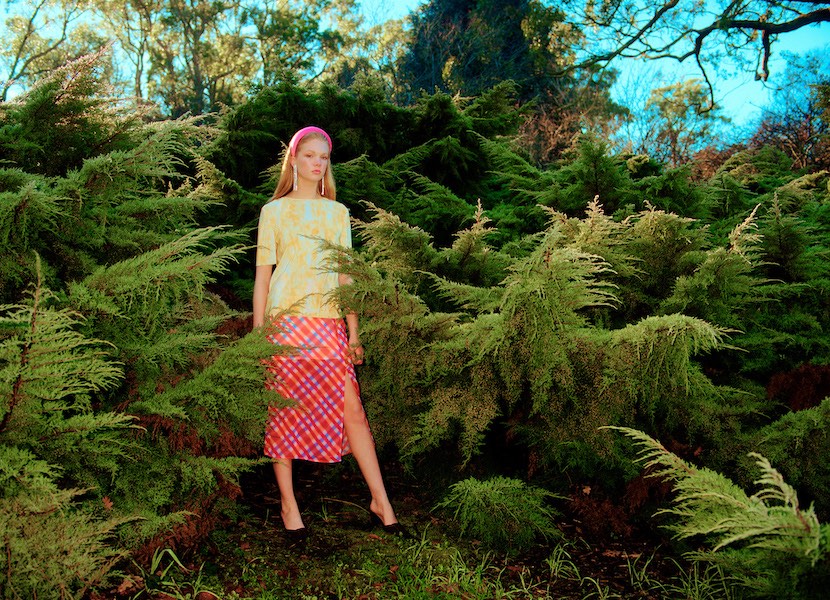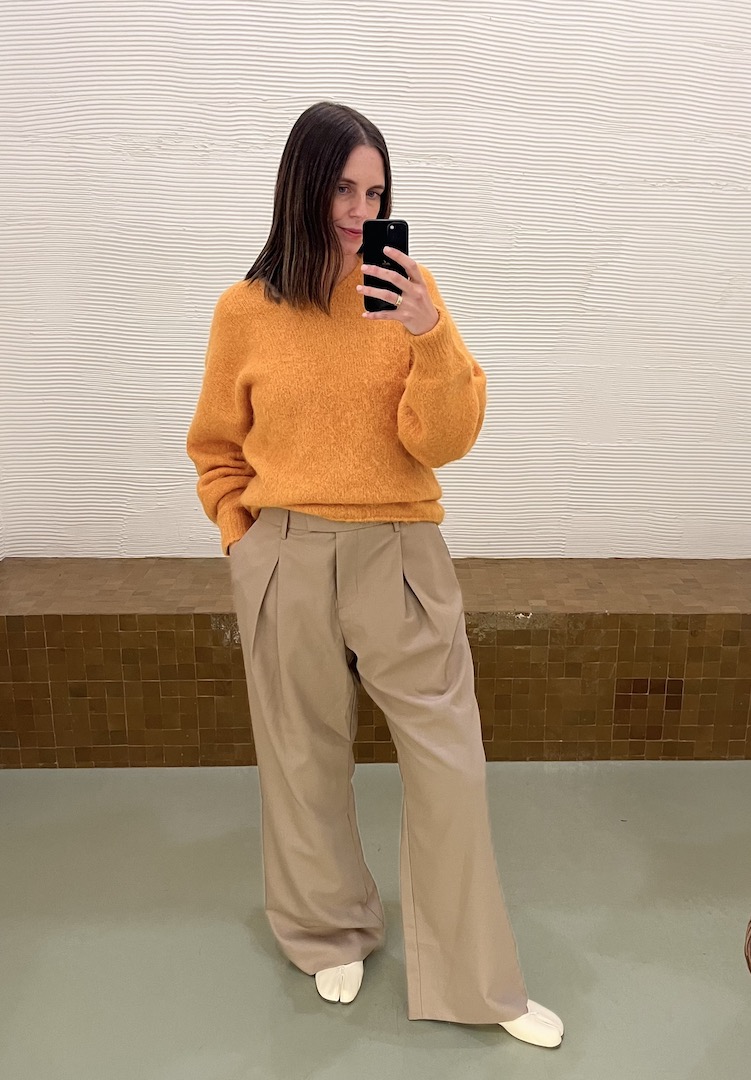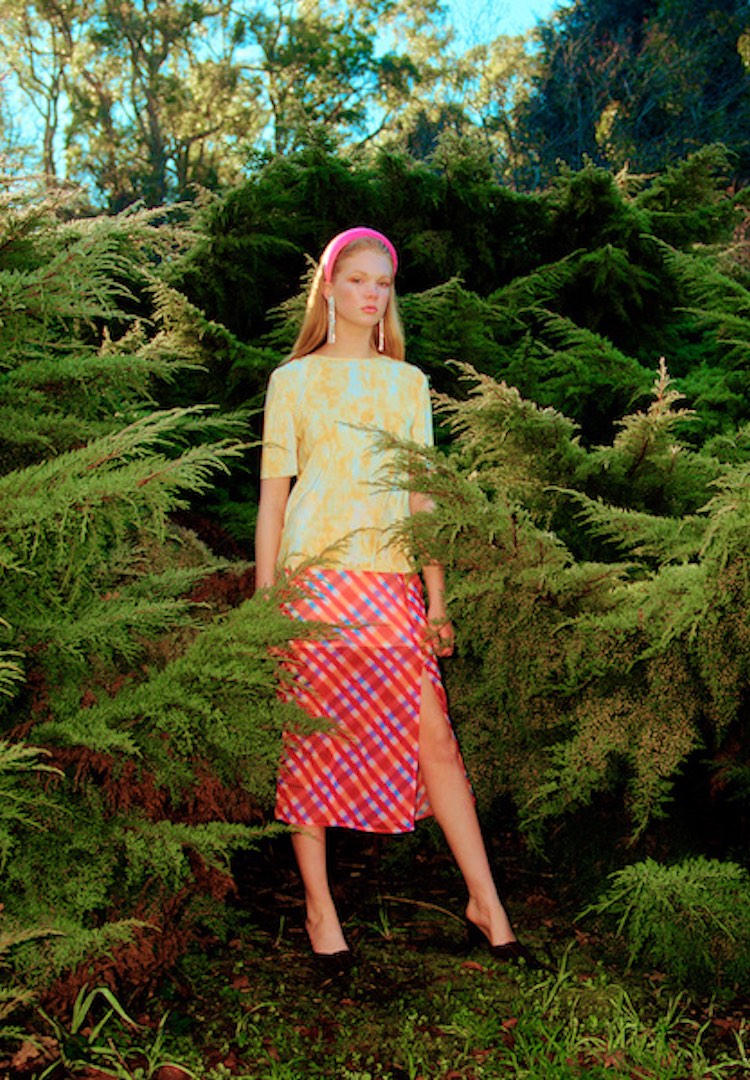Experts explain how to choose clothing fabrics and fibres that last
PHOTOGRAPHY BY NIKOLA DUKIC
WORDS By Bianca O’Neill
“As an easy first step, wherever possible, consumers should try to avoid the purchase of apparel fabrics made of petroleum.”
Amid the widely greenwashed climate in fashion at the moment lies some complex issues that can often muddy the waters when looking for truly sustainable clothing options. Consumers are often expected to clock the environmental cred of complicated fabric compositions, choose between technical fabrics that they may not understand, and decide whether vegan or real leather is more sustainable.
Is it better to choose a naturally occurring product that has ethical issues, or a product made from plastic that will never break down? Beyond that, arguments about clothing quality and lifespan, whether recycling plastic and petroleum products are actually better for the environment than not making them in the first place, and the ethical traceability of fabrics that undergo several hidden processes can make our choices even more difficult at the point of sale.
For more fashion news, shoots, articles and features, head to our Fashion section.
Briony Oayda, Managing Director at “wearable wellness” activewear brand, Bondi Active, agrees. “I think it can be quite difficult for customers to understand what fabrics are sustainable. Often, so-called ‘natural’ fibres are neither natural nor necessarily sustainable.
“Brands tend to greenwash by claiming their clothes are ‘all natural’ when that doesn’t necessarily mean they are taking any steps to source fabrics that are made with people, the planet and animals in mind.”
So whose responsibility is it, the consumer or the retailer?
It’s an ongoing argument within fashion industry circles – whether it’s up to the consumer to actively research to further their own sustainability education, or whether it’s up to the brands to be more transparent with their sustainability choices.
As Oayda points out, if we really want to change fashion’s dirty reputation as one of the most polluting industries on the planet, we probably have to start by regulating the use of certain terms. After all, we have strict certification procedures in place in order to use the term ‘Australian Made’, but not ‘sustainably made‘, ‘natural‘, or ‘ethically made‘.
Bondi Born founder, Dale McCarthy, however, believes the onus lies on the consumer, particularly considering it’s often the market that dictates real change.
“I think it will take time for consumers to change their way of making fashion choices,” says McCarthy. “Firstly, we hope consumers start… to actively read labels and begin to grow their understanding of what fabrics are sustainable and what are not. I’ve done a huge amount of research on it for Bondi Born, and I’m still learning, so it isn’t straightforward.”
So what fabrics are sustainable and how do I choose between them?
“It sounds complicated, but as an easy first step, wherever possible, consumers should try to avoid the purchase of apparel fabrics made of petroleum: acrylic, nylon and polyester,” says McCarthy. “Their creation uses large amounts of energy, water, oil and chemicals, they then shed plastic microfibres into our waterways when they are washed, and they will never biodegrade, sitting in landfills, leaching chemicals into the soil.”
However, as McCarthy points out in our chat, it’s not as simple as avoiding plastics and opting for ‘natural’ products. Further questions need to be asked. How was it dyed? Was it sourced from sustainable forests? How much water does the crop use? Is it made with ethical labour?
“One of the main traps is falling for terms like ‘natural’ when this doesn’t necessarily mean more sustainable,” says Oayda. “Soft, light and breathable, cotton is a fibre often associated with quality clothing. It has the advantage of being entirely biodegradable. [But you should] avoid traditionally farmed cotton and opt instead for recycled cotton or organic cotton, specifically with the Global Organic Textile Standard (GOTS) certification.
“Not only is it organic, but the GOTS system certifies a brand’s entire supply chain, following its practices – including the dyeing stage – and addresses a range of labour rights issues to be sure high standards of ethics are being maintained throughout the production process.”
Jade Arnott, the founder and designer of Melbourne-based brand Arnsdorf, agrees that natural is generally the best choice when consumers are looking at the label. “Organic and natural fabrics are generally the most sustainable choices,” says Arnott. “Things like organic cotton, hemp or Lenzing Tencel are biodegradable, and the production of these fibres is less polluting and can be regenerative for the environment.
“I think wool is a wonderful fibre, it has great properties like warmth and can also keep you cool depending on the climate. It’s wrinkle resistant [and] odour resistant so it needs infrequent washing and care. It is also biodegradable.
“I think wool is much more sustainable as a fabric than its synthetic counterparts and much more luxurious to wear. It’s also such a versatile fibre… [besides GOTS and organic cotton], Good Earth Cotton is another good choice to look for, they are focused on regenerative agriculture. [Also], find out what the ‘vegan’ leather is made from. Is it made from a recycled material or is it just petroleum-based PU?”
As Arnott mentions, ‘vegan’ fabrics are certainly having a moment in fashion right now, particularly considering the term ‘vegan’ is often emotionally linked to animal-friendly practices. But the environmental cred of something like mushroom or pineapple leather is obviously in striking contrast to PU ‘vegan’ leathers. How animal-friendly can something really be if it takes years to break down, devastating natural environments?
It’s also worth noting that all three of the experts I spoke to mentioned the need for certain man-made fabrics in clothing in order to add properties like stretch, durability and longevity, all of which can ensure your clothing stays in your wardrobe longer which in turn halts the turnover of clothing ending up in landfill.
Now I know a bit more about fabric choices, what else should I consider?
Hopefully the above helps us make better choices at the till but in the end, with so many different aspects to consider, such information can often make our decisions even more difficult. McCarthy believes the key is in certification.
“There is a lot of greenwashing in fashion, so the easiest way to judge is to look for eco certifications. There are many, but the key ones for fabrics are Oeko-Tex®: which puts the most stringent requirements on textile manufacturers, GOTS which is the gold standard for processing organic fibres by fabric mills, REACH which ensures no harmful chemicals are used in a fabric’s production [and] FSC which [is] a global body that protects forests and ensures fabric fibres sourced from wood products don’t harm our forests.”
Oayda, on the other hand, suggests considering the lifecycle of the product you’re buying. “It’s no secret that the fashion industry leaves a big footprint on the planet. The pressure is mounting on fashion brands to lower their impact on our planet, but consumers also have a role to play.
“The focus should be on the longevity and life cycle of the product. Good quality is a sustainable option… make the most of what’s already in your closet. The most sustainable wardrobe is the one you already have! Look after the clothes you own to extend their life, and when you no longer need them, repurpose them responsibly.”
For more tips on how to shop sustainably, try this.

